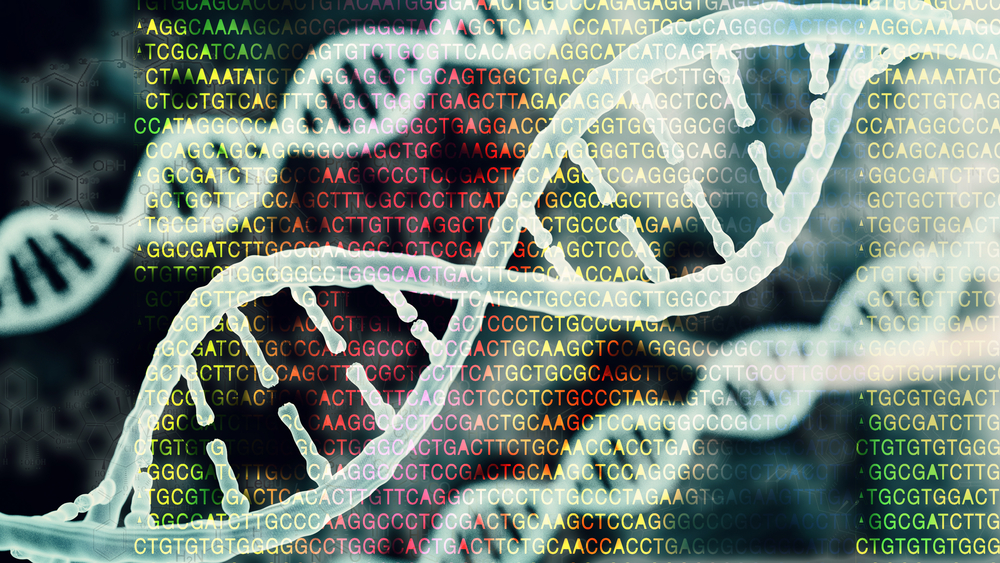Genetic Analysis of Families Finds Novel Mutations in SMA
Written by |

CI Photos/Shutterstock
Genetic analysis of 28 families with a member affected by spinal muscular atrophy (SMA) identified novel mutations in the SMN1 gene and different genes widely prevalent in SMA patients not found in unaffected family members, a study reveals.
The study, “High-throughput screening reveals novel mutations in spinal muscular atrophy patients,” was published in the Italian Journal of Pediatrics.
Mutations in the SMN1 gene cause the most common types of SMA. About 96% of people with the condition have mutations in which a section of the SMN1 gene (exon 7) is deleted in both copies (one from each parent).
The remaining cases are mostly associated with different types of SMN1 mutations and, as some studies suggest, mutations in other genes.
“Since both the clinical features and the mutation characteristics of SMA are obvious, the diagnosis of SMA is considered as relatively easy process,” researchers wrote. However, recents studies have reported that the diagnostic process for SMA is not always straightforward and simple “and there usually is a delay between the onset of clinical features and the diagnosis in all types of SMA.”
As such, and with the emergence of novel therapies for SMA, there is a continuing need to understand the genetic variation that underlies the disorder not only to avoid misdiagnosis, but also to aid in the early diagnosis of SMA.
“[It] is very important to understand the pathological [disease-causing] genetic characteristics of patients, which directly affects the diagnosis and treatment of patients,” researchers wrote.
Researchers based at the Tianjin Children’s Hospital in China analyzed 83 blood samples isolated from 28 families in which some members were suspected of having SMA. A genetic analysis was conducted first to diagnose SMA, then to find novel mutations associated with these patients.
SMA was suspected due to unstable walking in individuals ranging in age from 1 month to 12 years, while their parents did not show SMA symptoms.
The initial genetic analysis diagnosed 22 children with deletion of SMN1 exon7 mutations in both gene copies (homozygous), three carriers with SMN1 exon7 deletion in one gene copy (heterozygous), and two non-SMA individuals with two SMN1 copies.
In one family, the mother of an SMA patient had three SMN1 exon7 copies, and the father was a carrier. In contrast, in another family, the father of another SMA patient had three SMN1 exon7 copies, and the mother was a carrier.
Furthermore, a 2-year-old girl who was considered a carrier had some clinical features of SMA, such as muscle weakness and degeneration. In this case, the mother was the carrier, while the father did not have deletion mutations.
Of the 83 samples, six single-point mutations in the SMN1 gene were identified, four of which were reported for the first time, including 84C to T, 271C to T, −39A to G, and 70240639G to C.
(Of note, the four nucleotide building blocks of DNA are cytosine (C), guanine (G), thymine (T), and adenine (A), in which a change in one nucleotide is a single-point mutation).
While the 84C to T mutation does not result in a change in the amino acid (building blocks of proteins) sequence of the resulting survival motor neuron (SMN) protein (synonymous mutation), the 271C to T leads to a shorter protein (stop-gain mutation).
The −39A to G mutation occurred in an area adjacent to the SMN1 gene, while the 70240639G to C change was found in the part of the gene that does not contain protein information (non-coding). How these changes affect function is unknown.
The two other mutations were 462A to G, which was synonymous, while the 70247937A to C mutation was found in a non-coding region, also with no known function.
Interestingly, the 271C to T mutation that creates a shorter SMN protein was found in the father of the 2-year-old girl with symptoms.
“[We] suspected that [the 2-year-old girl with symptoms] might be [a] SMA patient caused by the heterozygous deletion of SMN1 exon 7 combined with the SMN1 stop-gain mutation [271C to T],” the researchers wrote.
The 462A to G mutation occurred in 17 SMA patients, two carriers, and two unaffected individuals. In addition, one carrier had the 84C to T mutation, one SMA patient had the −39A to G mutation, and another SMA patient the 70240639G to C mutation.
Based on these results, a more detailed genetic analysis was conducted in 20 SMA patients with both gene copies containing the SMN1 exon7 deletion and five non-SMA children as a comparison to find additional mutations.
The team found 30 mutations that occurred in the least 50% of SMA patients, with the most frequent mutation in the SPTA1 gene found in 19 (95%) of affected children. This gene provides instructions for making a protein that helps maintain cell shape.
The second most frequent mutation found was in the FUT5 gene in 17 patients (85%), and this gene carries instructions for a metabolic enzyme.
A mutation in the MCCC2 gene occurred in 15 (75%) of affected individuals, encoding an enzyme found in mitochondria, the energy-producing centers in cells. The MCCC2 gene was “located on chromosome 5q13, which was the same location as SMN1,” the researchers wrote.
“We found more mutations in both SMN1 and other genes, and some of them were associated with the onset of SMA, such as the SMN1 stop-gain mutation [271C to T],” they added.






